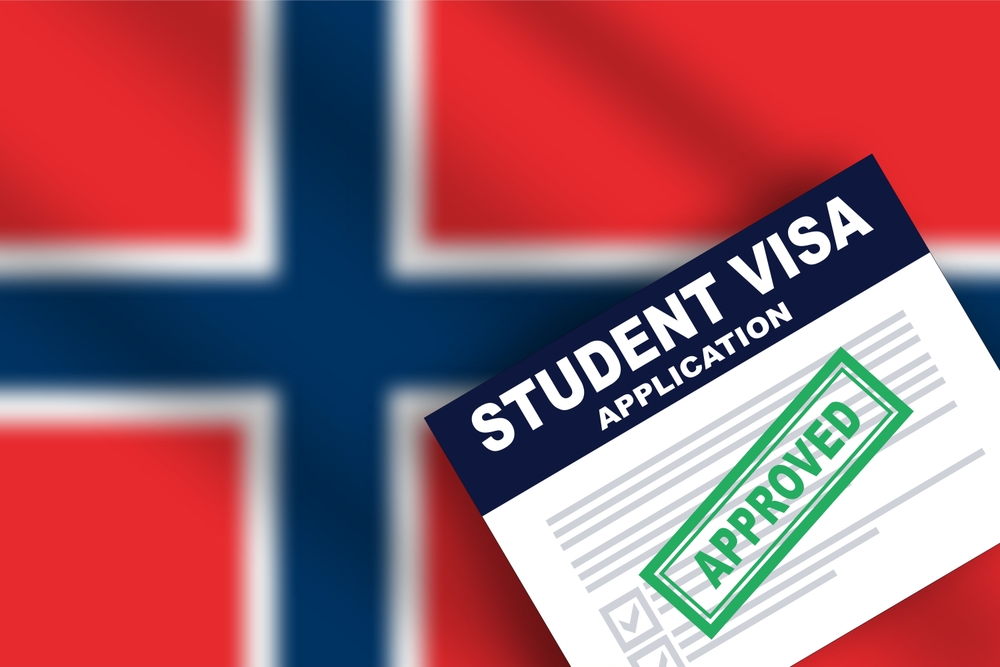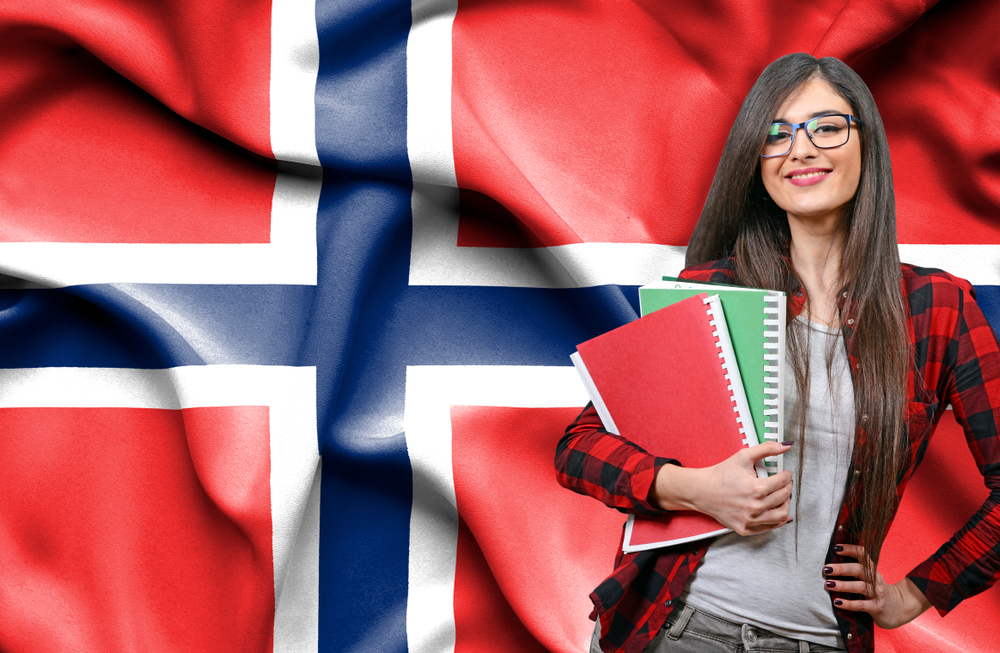Norway Allows Any Student From Anywhere In The World To Study At Their Public Colleges Tuition-Free

What if education wasn’t about borders, but about bridges? For years, Norway symbolized that vision. Students from every corner of the world could walk into its classrooms and lecture halls without the heavy weight of tuition fees on their shoulders. It was more than policy—it was a philosophy: knowledge belongs to everyone, not just those born in the right country or with the right bank account.
But in 2023, something changed. Norway, like many nations wrestling with budgets and politics, introduced tuition fees for international students outside the EU/EEA and Switzerland. Overnight, the dream of studying in one of the world’s most progressive countries dimmed for thousands of young people. And almost immediately, the numbers told the story: international enrollment collapsed by nearly 80 percent. Imagine the silence in classrooms once filled with accents, languages, and perspectives from around the globe. Diversity that once thrived began to fade.
Two years later, the pendulum has swung back. In June 2025, the Norwegian government announced it will no longer require international tuition fees. Instead, universities and colleges can decide for themselves whether to charge. This isn’t just a technical shift in policy—it’s a deeper message. A message that says: we made a mistake, and we’re ready to re-open the door. The question now is: what will Norway, its universities, and the students who dream of studying there do with this second chance?

Breaking Down Barriers in Research and Opportunity
When we talk about education, we can’t stop at the undergraduate classroom. Knowledge is a staircase, and at the top are the researchers, the PhD students, the people dedicating years of their lives to questions that can change the world. For too long, Norway asked these students to prove not only their brilliance but also their wealth. Until recently, an international PhD candidate needed to show they had more than 325,000 NOK—over $30,000—just sitting in their account to qualify. For many, that number wasn’t just a barrier, it was a wall.
Now, that wall is being lowered. The requirement has dropped to 80,000 NOK, a fraction of what it was. Still a hurdle, yes, but no longer a mountain too steep to climb. This change means a student from Ghana, Brazil, or Vietnam with vision and determination might actually see a path forward in Norway. It means research won’t be reserved only for those with the privilege of wealth, but for those with the courage to contribute. That’s how innovation happens—not in echo chambers of the elite, but in diverse rooms filled with perspectives that collide, challenge, and create new ideas.
And here’s another door opening: Norway has removed its Norwegian-language requirement for academic positions. That single decision says something profound. It says, “We don’t need you to sound like us, we need you to think with us.” It’s a recognition that English, for better or worse, is the common language of global research. By lifting the restriction, Norway has joined the wider world in saying that ideas matter more than accents. For international scholars, this is more than a technicality—it’s an invitation.
Imagine the ripple effects. A young scientist comes to Norway not only to earn a PhD but to stay, teach, and build a career. A researcher connects a lab in Oslo with another in Nairobi or New Delhi. Ideas flow across borders, solutions multiply, and Norway becomes not just a place of learning but a crossroads of global progress. When barriers fall, possibilities rise.

The Voices of Students and Universities
Every policy has a human echo. When tuition fees arrived in 2023, the echo was disappointment—student groups warning of the damage it would cause, universities scrambling to adapt. Now, with the reversal, the echo sounds different. Student organizations like the Student and Academics International Relief Fund (SAIH) have called the move a much-needed step back toward international cooperation. For them, this isn’t just about money—it’s about belonging. They see education not as a product to be sold but as a shared resource, a bridge between cultures.
University leaders, too, have spoken up. Siri Fjellheim, rector at the Norwegian University of Life Sciences, put it plainly: international students “bring experiences and perspectives that never could be created alone.” Read that again. Alone. That word says everything. Without international students, classrooms shrink—not just in size, but in possibility. A lecture on agriculture, medicine, or politics means something entirely different when the person sitting next to you grew up in Nairobi, São Paulo, or Beijing. Learning isn’t just in the textbooks; it’s in the lived experiences of the people around you.
And yet, the story isn’t finished. Some student groups argue that the government hasn’t gone far enough. Yes, the national mandate for fees is gone, but universities can still choose to charge. That creates uncertainty. Will one campus be open and inclusive while another holds onto the revenue model? Will students have to navigate a maze of inconsistent rules just to pursue their dreams? Leaders like Kaja Ingdal Hovdenak of the Norwegian Student Union have made it clear: if Norway wants to attract and keep the best talent, it must prioritize clarity and fairness across the entire system.
So, the celebration is real, but it comes with a reminder: change on paper is only the beginning. The true test will be in how universities use this freedom. Will they honor the spirit of openness, or retreat into financial caution? The decisions they make now will echo for years in the lives of students—and in the reputation of Norway itself.

Why the World Is Watching
This isn’t just about Norway. Education today is global, and countries compete not only for investment and trade but also for minds. Germany, Finland, and other European nations already attract students by keeping tuition low or nonexistent. Norway’s fees put it at a disadvantage, and the dramatic fall in international enrollment proved how unforgiving that competition can be. By re-opening the possibility of tuition-free study, Norway is saying: we’re back in the game.
But the impact goes deeper. Education is one of the strongest forms of soft power. Students who study abroad don’t just take home a diploma—they take home stories, relationships, and a piece of the culture they lived in. They become ambassadors, often for life. For Norway, which prides itself on leadership in areas like renewable energy, environmental research, and peacebuilding, this kind of influence is invaluable. An international student today might be a policymaker, scientist, or entrepreneur tomorrow, carrying with them a connection to the country that gave them opportunity.
The reversal also sends a signal to the world about what Norway values. It says that international diversity is not a burden but an asset. It challenges other countries to reflect on how their policies align with their ideals. Do we build walls around knowledge, or do we open doors wider? In an era where global challenges demand global solutions, inclusivity in education isn’t just noble—it’s necessary. Climate change, pandemics, inequality—none of these problems stop at borders, so why should the education of the people tackling them?
Norway’s choice resonates because it reveals a truth: the strength of a nation’s universities is measured not by how exclusive they are, but by how inclusive they choose to be. And right now, the world is watching whether Norway will embrace this truth fully or only halfway.
A Call to Action: Learning Without Borders
At the heart of this story is a bigger question: what do we believe education should be? A privilege for the few, or a pathway for the many? Norway’s reversal is a reminder that policies can change, that doors once closed can be reopened. But it’s also a challenge—to universities, to students, and to all of us who care about the future of knowledge.
If you are a student dreaming of studying abroad, let this remind you that setbacks are not endings. Norway’s policy change shows that even powerful systems can shift, and opportunities can return. Keep preparing, keep believing, because the door that closes today may open tomorrow. If you are part of an institution, this is your moment to step up. Choose openness. Choose diversity. Choose to create classrooms where voices from every corner of the earth collide and harmonize.
And for the rest of us, let’s remember that education is never just local—it is global. Every time a student crosses a border to learn, they carry with them ideas, questions, and solutions that ripple outward. Norway’s decision is a reminder that when we remove barriers to knowledge, we don’t just change lives—we change the world.
So here’s the call: let’s build an era where no student is turned away because of where they were born or how much money sits in their account. Let’s build an era where nations compete not by who can charge the most, but by who can inspire the most. Because in the end, education without borders isn’t just Norway’s mission—it’s humanity’s.
Loading...

